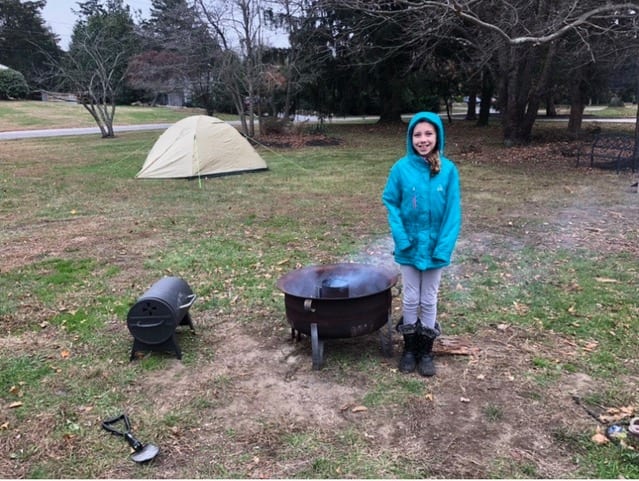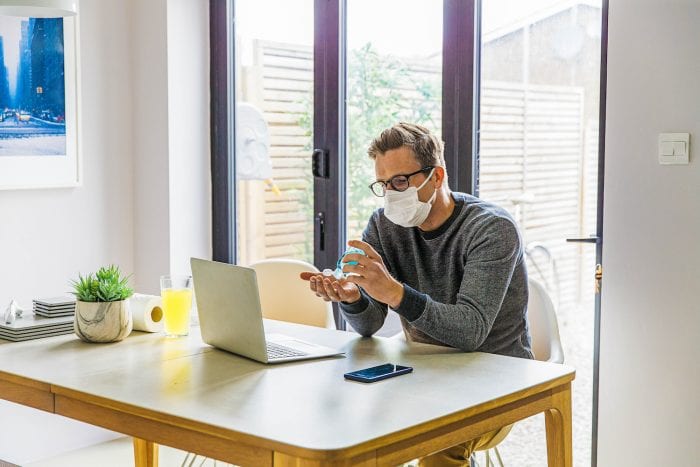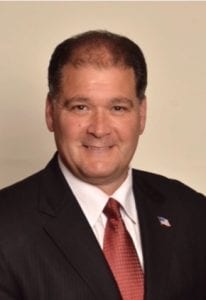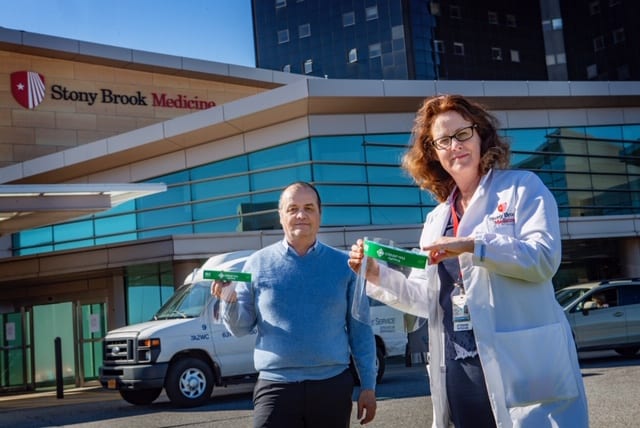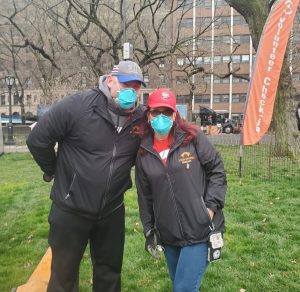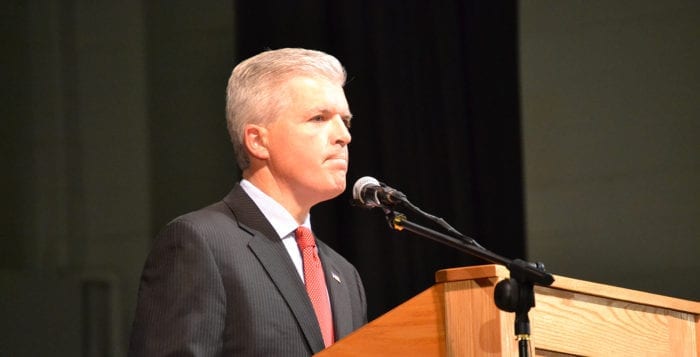
It’s been more than a year since the Boy Scouts of America became Scouts BSA, inviting girls to join separate, gender-specific units and earn the Eagle Scout rank. Since then female troop units have been popping up along the North Shore.
In the Three Village area, Setauket mom Megan Larsen recently established Troop 355. She said the number is a nod to the famous Culper Spy Ring as “355” was the code for lady. It’s believed the spies used 355 in code to refer to Anna Strong Smith who reportedly hung clothes on a line to send signals to those in the spy ring.
“It’s just a nod to our district and to our local history,” the troop leader said.
Larsen’s 13-year-old daughter Emma belonged to BSA girl unit Troop 2019 in Sound Beach when the family lived in Mount Sinai. When they moved to Setauket at the end of June, they continued with the unit, but Larsen said it was difficult to keep up with the drive with schoolwork and other activities.
Larsen said the BSA community is tight knit, and she has been receiving a lot of help from other troop leaders. Her husband, Eric, who grew up in Setauket, was involved with the local Boy Scout Troop 70 for years and was even a Venturing crew leader. He would take Emma to meetings, and when she was a toddler, she even had a Troop 70 T-shirt.
“It was sort of foreshadowing,” Megan Larsen said.
What does it take to start an all-girls BSA troop? The 355 troop leader said once a prospective leader goes to the BSA council to file paperwork and it’s approved, it’s then up to the leader to invite the community to join. On Feb. 23, she held an open house to introduce girls to the organization, and said they received a lot of help from Troop 70. Many local units, both boys and girls, also joined them in last year’s Three Village Electric Holiday Parade.
When her daughters, who include 8-year-old Audrey, showed an interest in the BSA, their mother decided to have them join. Her 10-year-old son Peter is a Cub Scout.
“I saw the positive impact that it had on my husband’s life,” she said, adding she was especially impressed with the friendships formed and public-speaking skills the boys gained.

While Emma has belonged to the Girl Scouts, Larsen said Scouts BSA was a better fit for her daughter who loves whittling, kayaking and camping.
Larsen said she can understand how teenage girls may be hesitant to join something until they see their peers are a part of it.
“It’s new, and I think a lot of times girls are a little hesitant because they don’t know it’s out there, or they want to see other girls doing it first,” she said.
Troop leader Ann Colletta from Sound Beach Troop 2019 said she was on board with the idea of girls in the Scouts since it was announced. She currently has 11 girls in her unit, and she sits on the committee in her district.
“I thought it was a great idea,” she said. “I had my reservations at first because I wasn’t sure how it would work out.”
She said once she learned more about it she realized it was what her daughter June had been wanting.
Colletta said while it may seem like a leap of faith to start up a girl unit, she agreed with Larsen that other leaders, as well as boy units, have been helpful. She added when her troop originally started, it was the boys in BSA who taught the girls different skills and were welcoming and helpful.
“My girls are learning from them, and when younger girls come in the girls can teach them,” Colletta said.
The mother of seven children, who has experience with both BSA and Girl Scouts of the USA, said her 12-year-old daughter, who is also a GSA member, wanted to do the same things as her 17-year-old brother Peter, who become an Eagle Scout. Colletta said she knows what BSA can do for children as her son was shy, and she has watched him blossom.

“We’re outdoor oriented,” Colletta said. “She wanted to do the same thing as him, go to summer camps and go camping.”
Craig Rome, who heads up Troop 539G in Kings Park, said he’s always willing to help other troop leaders and has found many to be helpful in spreading the word about the female units.
His girl unit, which has 17 members, will celebrate its first anniversary April 15, even though a celebration is on hold until after the current COVID-19 pandemic is over.
Like Colletta, he has found that many of the girls enjoy the outdoor activities that BSA offers. He said in addition to outdoor events, the Scouts offer community service opportunities, first-aid skills, archery and more, as well as foster leadership. Meetings are led by the Scouts themselves, and he feels it’s great to have the girls exposed to the same leadership roles as the boys, adding that young women can be part of both the BSA and GSA like his daughter Emma who started in Girl Scouts.
Since she has joined BSA, he said he has noticed a difference in his daughter, watching her now encouraged to take on leadership roles.
“I think she enjoys leadership,” he said.
Rome said that, at first, they had four or five girls, siblings of boys already in the male unit. But after putting announcements out in the school, more girls joined, and he said he thinks there was a pent-up demand. Now after seeing the impact it’s had on these children, he said he wished the BSA had done it sooner, and when people ask him if he thinks BSA works for girls, he said he finds it does.

“The energy level that these girls have is incredible,” he said. “It really put a smile on your face when you saw them get together and form the troop.”
Tammy Campagnola-Levinsky has also had a positive experience as a troop leader. Since last year, 218G in Melville has grown from five to 13, and her 18-year-old daughter, Summer, who had wanted to become one since she was 7 years old is one of the Scouts.
Campagnola-Levinsky said one opportunity the girls have is an extension to become an Eagle Scout, which is also offered to the boys. Usually, a Scout must achieve the rank by 17 but an extension can be requested.
Like many girls, her daughter has become involved in activities such as camping, meeting elected officials and traveling since joining BSA, something she may not have done outside of the organization. Her daughter has also become involved in BSA’s National Youth Leadership Training.
“It’s her passion,” the troop leader said. “It’s her driving force.”
Since there’s such a lack of these all-female troops, Troop 218G has members from Nassau County and the South Shore. Rome and Campagnola-Levinsky said every Scout, whether a boy or girl, should visit different units to see how they operate since each unit can have a different style or focus. Campagnola-Levinsky pointed out that sometimes members of a Cub Scout Pack may even go on to different units.
“Scouting to me is one of the life lessons that you will take all the way through adulthood and it just doesn’t apply to scouting but your life forward — family, friends, job,” Campagnola-Levinsky said. “So, the skills you learn are lifetime skills, and you want them to be comfortable in the environment they are in and like the unit they are with.”

